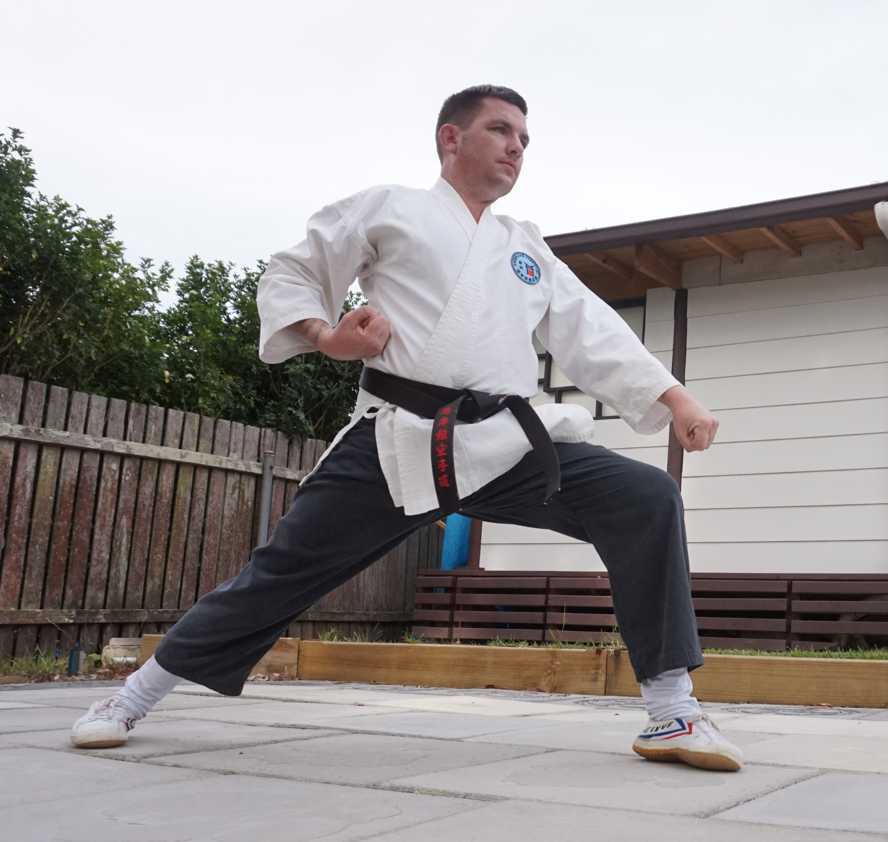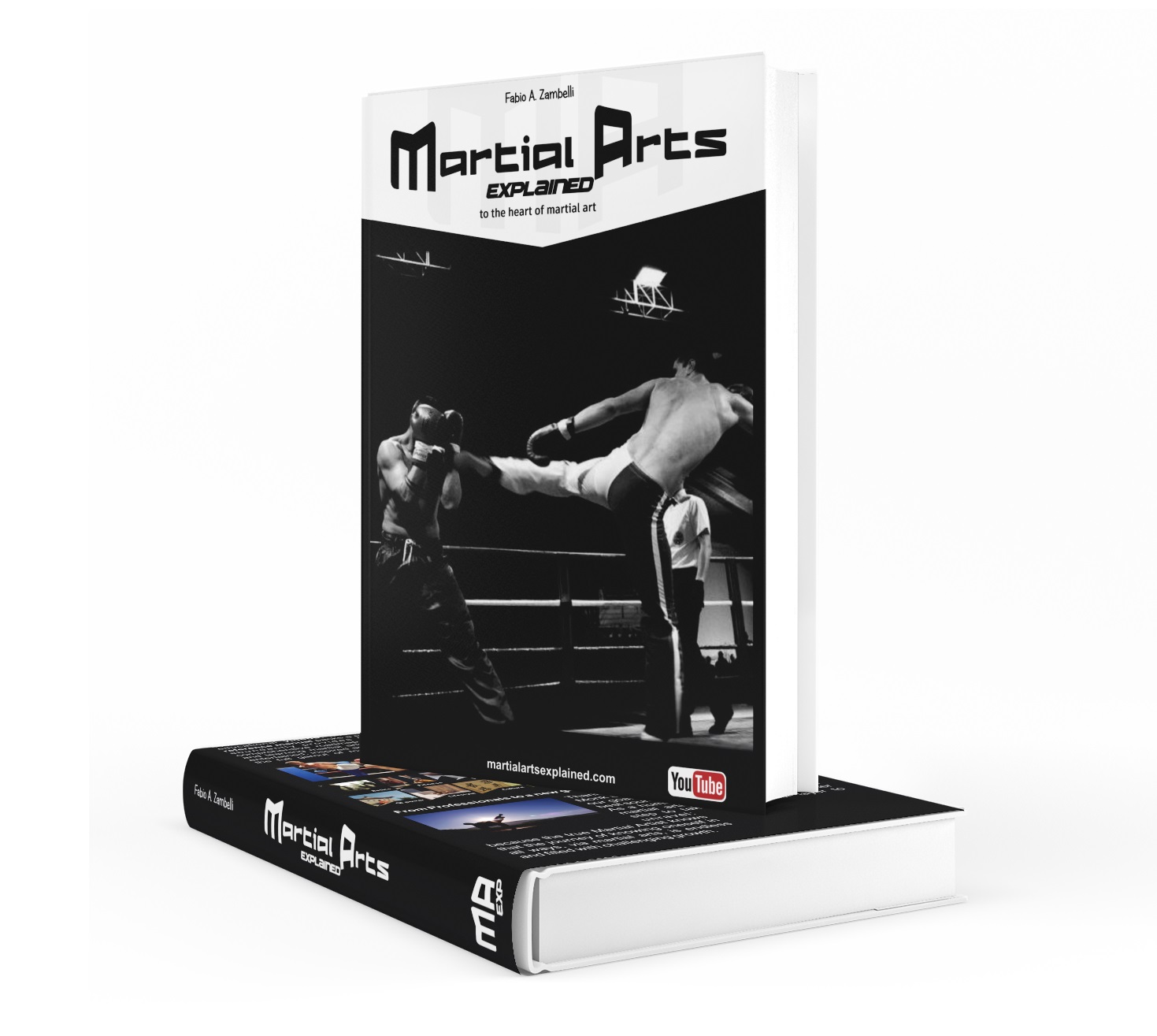Mawashi Uke (Roundhouse Block)
The Mawashi Uke is a roundhouse block found most often in traditional forms of Karate, such as Goju-Ryu and Shotokan. It generally begins with one open hand with fingers extending upwards and thumb tucked tightly into the side of the palm, pulled back tightly just under the armpit. The other hand is shaped the same, but with fingers pointing downwards and tucked in at the waist at about belt (obi) height. The elbows should be drawn back and not stick out to the sides, and the shoulders should not be tense or hunched up.
At this stage, both hands begin to move in a circular motion simultaneously, the upper hand dropping down with thumb pointing inwards, the lower hand sweeping in front of the face with thumb also directed inwards. This circular momentum continues, with hands changing to pass the face and groin a second time. The move completes with the hand originally pointing upwards now pointing downwards, and vice versa. At this point, both open palms strike outwards, sometimes slowly, sometimes fast, but always with force. It is important to also note that the arms extend slightly during movement, like a clutch, so that they may reach the face and groin that they are circling to defend.
The movement then restarts, in opposite direction (clockwise, then counter-clockwise). This can be repeated indefinitely, although a continues uni-directional circle can continue over and over to gain space from the opponent. One full revolution actually goes past the starting point, finishing at what essentially would be 520°.
Most defensive blocks in Karate are far simpler, involving a deflection or a grab. Due to the complexity of Mawashi Uke, it can be very off-putting for beginners to attempt to coordinate, and as such many modern schools have removed it from their curriculum. However, there is much value to this often debated, (or worse overlooked) move.
- It teaches coordination, flow and rhythm. These are all vital concepts in Karate – and the knowledge of such a move prevents a karateka from falling into the trap of being very ‘staccato’ in their movements.
- It improves proprioception, and spatial awareness of close combat defensive moves.
- The move can be employed in multiple defensive bunkai’s with the defense switching into an attacking strike at any point during the revolution of the arms.
- The move continually defends the body with not just a stiff guard, mot an evolving and shape-shifting pattern that can be extremely off-putting to an opponent.
- It is one of the few truly circular moves in Karate, but as seen in styles such as Qigong and Aikido this can be a valuable tool in any Martial repertoire.
If you are yet to learn Mawashi Uke, be encouraged to study it and perfect it. Practice in front of a mirror, and practice with a partner so you can experience it’s defensive capabilities. If you already have learned it, continue to practice and even occasionally try including it in your sparring to keep your opponent guessing. You will have gained an asset that not all Martial Artists have.





